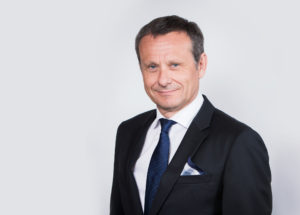
Juba, South Sudan, November 23, 2018//-Valery Guillebon, CEO of Sahara Energy International PTE Ltd has urged investors to take advantage of emerging opportunities in South Sudan’s upstream, downstream and power sectors in the wake of positive market forecasts and assurances of enabling business environment from the oil-rich nation.
Speaking at the Africa Oil & Power Conference in Juba, Guillebon said, “The demand for fuel in South Sudan considering its recovering economy will grow substantially over the next few years and ensuring that petroleum products are readily available locally is essential.
Petroleum Products demand in South Sudan will be driven by population growth. Estimated at 12.6 million in 2017, South Sudan’s population is expected to increase to 15 million by 2020. “This trend will be a critical driver of economic growth in the nation,” said Guillebon. Sahara Energy International Ltd PTE is the oil & gas commodity trading and logistics division of leading energy and infrastructure conglomerate, Sahara Group.
According to Guillebon, demand for crude oil is also projected to increase due to expected expansion of the global economy. “South Sudan’s crude production currently represents 15% of non-OPEC crude production in Africa and a significant portion of crude production in East Africa.
As growth continues in Asia, especially India, and Africa begins to industrialize, more crude will be needed for refineries to supply the downstream demand for fuels. Consequently, demand for South Sudan crude is expected to grow as well.”
He stated that there was a critical need for the development of new crude oil and product pipelines into South Sudan to drive availability, efficiency and sustainability in the sector.
He explained that this would also speed up the economic growth of the country by reducing the landing cost and pump price of petroleum products; reducing pressure on road infrastructure and mishaps due to trucking; and increase overall quality of life by reducing emissions and pollution.
Guillebon urged East African countries to explore various models of cooperation to drive more cost-effective solutions to the development of oil, gas and power infrastructure across the region.
According to the Africa Development Bank, East Africa, with a GDP growth of 5.9% recorded the continent’s best economic performance in 2017 above the continental average of 3.6%, while its GDP growth is expected to continue with a forecast of 6.2% in 2019.
“Cooperation between multiple countries within the region will ensure that the cost of developing required infrastructure is minimized and the potential benefits and scale maximized. Outstanding examples of intra-regional cooperation include the TAZAMA pipeline between Dar Es Salaam in Tanzania and Ndola in Zambia which supplies coming led crude to the Indeni refinery as well as the West African gas pipeline (WAGP) that interconnects Nigeria, Benin Republic, Togo and Ghana,” he said.
Instructively, Sahara Energy is a leading supplier of petroleum products in East Africa, delivering between 150,000MT and 200,000MT of Gasoline, Diesel and Jet Fuel per month and has its sights on expanding its operations across the region in the oil and gas, power and infrastructure sectors.
African Eye Report


